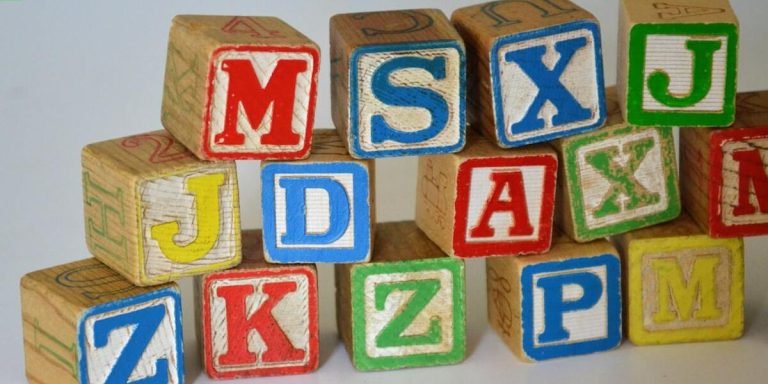Idea 2004: A Comprehensive Overview for Parents and Educators
Navigating through the nuances of educational legislation can be complex, particularly when it comes to accommodating exceptional learning needs. One such piece of legation is IDEA 2004; a reauthorization act with significant implications for special education resources and support. Understanding its scope can empower parents and educators alike in ensuring that every child has access to an effective, individualized education.
The Individuals with Disabilities Education Act (IDEA) underwent revisions in 2004 aiming at improving educational outcomes for students with disabilities—hence named as ‘idea 2004.’ It guarantees certain rights related to education and services making provision for children from birth until they reach twenty-one years old or graduate high school. Let’s delve into this extensive law further—a comprehensive overview awaits.
Did you know?
Did you know? The Individuals with Disabilities Education Act (IDEA) 2004 was not a new law. Instead, it highly enhanced and reauthorized the original IDEA law from 1975 to now offer even more protection for students with disabilities.
Exploring the Impact of IDEA 2004 on Special Education Resources
The Individuals with Disabilities Education Act (IDEA) of 2004 revolutionized the landscape of special education. Its impact on resources and support for children with disabilities cannot be overstated. The mandate to provide free appropriate public education in the least restrictive environment possible was a significant step forward, ensuring students weren’t just accommodated, but were included within mainstream educational settings.
This legislation recognized that each child is unique, necessitating personalized learning plans tailored to individual needs – another major breakthrough under IDEA 2004. It introduced Individualized Education Programs (IEPs), which became instrumental in systematically addressing every student’s distinct requirements. In turn, it led schools across America to embrace an array of teaching modalities and offer a wider range of resources designed specifically for special education.
Moreover, IDEA 2004 advanced technology integration within these resource provisions extensively. Nowhere is this more apparent than in how digital platforms are being leveraged as part of IEPs today – used not only as supplementary tools but integral parts helping achieve set goals effectively.
The Evolution of Teaching Materials and Aids Under IDEA
In 2004, the Individuals with Disabilities Education Act (IDEA) happened to significantly shape special education resources. The evolution brought by IDEA has had a profound impact on teaching materials and aids used in classrooms today.
Before its implementation, traditional teaching methods ruled within Special Educational Needs(SEN). These methods often lacked customization that accommodated individual needs amongst learners struggling with disabilities.
However, post-IDEA 2004 era witnessed greater emphasis on technological interventions like adaptive computer software and assistive devices for children who faced difficulties interacting socially or communicating effectively.
These educational technologies didn’t just provide access to regular curriculum but also offered personalized learning plans tailored specifically towards unique capabilities of individuals thereby empowering them maximally.
Additionally, many schools have now integrated digital libraries that are equipped with audio-books which can be translated across multiple languages seamlessly catering to diverse range users irrespective their linguistic background especially helping those having reading disorders or visual impairments.
Enhancing Accessibility: Technology and Tools Post-IDEA Implementation
In the wake of implementing IDEA 2004, significant strides have been made in terms of enhancing accessibility for Special Education. Technology and specific resources have emerged as game-changers, making learning more inclusive than ever before.
One cannot underscore enough the benefits yielded by accessible technology in education post-IDEA implementation. These tools offer highly personalised experiences tailored to individual needs. For instance, assistive tech devices such as text-to-speech software aid students with dyslexia or other reading-related disabilities.
Moreover, adaptive equipment like alternative keyboards and voice recognition programs allow physically challenged students to interact effectively with computers, thus facilitating their participation just like any typical student would.
Another dynamic contribution cited following IDEA 2004 is digital textbooks’ incorporation into special educational settings that are both interactive and adjustable based on a learner’s needs – thereby fostering a nurturing and conducive environment for academic transmutation.
Equally noteworthy is how online platforms now provide convenient access to support services ranging from tutoring assistance to counselling – further emphasising inclusivity borne out of this legislation while reaffirming commitment towards levelling the playing field for all learners irrespective of their exceptionalities.
Navigating Support Services Enabled by IDEA 2004 Legislation
As parents and educators, understanding the nuances of the Individuals with Disabilities Education Act (IDEA) 2004 can significantly improve support services provided to children. After all, this legislation is not just about legal terms; rather, it’s a catalyst that bridges gaps in special education resources.
Under IDEA 2004 guidelines, technology integration in education has gained momentum like never before. This act ensures students who require additional assistance receive necessary tools for an enriching learning experience. It encourages schools to leverage modern educational tech-tools — from interactive whiteboards for better visual learning to speech recognition software aiding those struggling with language skills.
Moreover, there’s growing focus on assistive technology devices bringing revolutionary changes in special education sector since past two decades. These aren’t mere instruments or auxiliary aids but lifelines supporting individuals with disabilities reaching their fullest potential academically and socially.
As we fast forward into 2023—almost twenty years after the inception of IDEA—we marvel at the progress made so far. Today’s classrooms function radically differently from those of the last decade! However, with these advancements come challenges. Future readiness doesn’t just mean introducing high-end gadgets in classrooms or mastering their use; it also means pushing boundaries to ensure every beneficiary fully reaps the legislation’s benefits. This transformation has reshaped the discourse around disability rights nationwide and reaffirmed our commitment to creating inclusive societies globally.
Strengthening Parental Involvement and Rights in IEP Development
Understanding Individualized Education Programs (IEPs) can be a daunting task for many parents. However, with the IDEA 2004 legislation in place now, parents have been given more power and voice than ever before.
Firstly, it’s important to understand that an IEP is not just about your child’s academic goals. It encompasses everything from social skills to physical therapy; anything necessary for a well-rounded education plan under idea 2004 regulations.
Parents play an integral role in developing this comprehensive program. By law, you as a parent are entitled to actively contribute input into your child’s learning process. The intention of including parental involvement within the framework of idea 2004 was precisely aimed at safeguarding children’s right towards inclusive education- reinforcing their access both inside and outside school settings without any discrimination.
Federal Grants and Programs for Special Needs Education Expansion
The IDEA 2004 legislation was a landmark victory for children with special needs that made significant strides towards supporting and improving their educational experience. A remarkable facet of the IDEA 2004 is its emphasis on federal grants and programs aimed at expanding Special Needs Education.
Receiving federal funds has become more accessible than ever, providing educators and parents alike with the resources necessary to nurture every child’s unique learning journey. These initiatives not only increase available assistance but also pave avenues for innovative teaching methods such as technology integration in education.
For instance, one prominent program funded under this law is The Assistive Technology Act Program (ATAP). ATAP promotes awareness about technological devices or services designed to improve functional capabilities of individuals with disabilities – thereby integrating inclusive practices into mainstream classrooms effectively.
Another notable mention would be Early Intervention Programs, which target infants and toddlers identified as ‘at risk.’ Essential services provided include speech therapy, nutritional advice among other specialized supports – thus ensuring they don’t miss out during critical developmental years due to delayed diagnosis.
Moreover, it mustn’t go unnoticed that these federally-funded programs act as catalysts in bridging resource gaps across socio-economic strata; empowering schools with fewer resources access valuable assistive tech tools without fearing financial constraints.
In conclusion: while navigating the roadmap created by IDEA 2004 may seem challenging initially due to its vast expanse covering varied facets of special education; rest assured knowing there are robust support systems backed by proactive government funding doing wonders behind scenes seven days a week!
Assessing Professional Development Through the Lens of IDEA 2004
Analyzing professional development in education from the perspective of the Individuals with Disabilities Education Act (IDEA) 2004 offers valuable insights into the readiness of today’s learning institutions to meet the needs of students with disabilities. Established as a key policy, IDEA ensures equal educational opportunities, especially for those requiring extra resources or support. This groundbreaking legislation spurred widespread changes in America’s classrooms and highlights the importance of inclusion in professional development programs.
With technology integration becoming increasingly prevalent in contemporary pedagogical methods, it has gained particular significance within special education scenarios. With IDEA 2004 at its core, this combination empowers educators by providing tools that facilitate customization of coursework according to each student’s Individualized Education Program (IEP). Such an approach not only lightens teachers’ workload but also aids them in effectively meeting individual learning requirements.
In terms of assessing and enhancing professional development initiatives based on these principles, school administrators can continually refine their strategies through regular evaluations and feedback sessions. After-all continuous improvement forms the basis for seamless technology-integration while aligning with mandates set forth under IDEA 2004.With comprehensive training provisions related to using assistive technologies underlining every educator’s training program,the playing field becomes even more leveled further reinforcing inclusive education norms identified via IDEA.
Training Educators to Adapt To Diverse Learning Requirements
Special educators hold a key position in shaping the future of students with diverse learning requirements. Central to this role is their ability to adapt and mold teaching methods based on every child’s unique needs. Under IDEA 2004 (Individuals with Disabilities Education Act), professional development for these specialized teachers has witnessed significant refinement.
To start, training programs now emphasize heavily on understanding each student’s signature strengths and challenges. Educators are taught strategies that allow them to cater not just educational content but also its delivery uniquely designed around an individual learner’s style. Technology plays a pivotal role in customizing such solutions.
Moreover, technology integration acts as a catalyst for fostering inclusive education settings under IDEA 2004 guidelines. For instance, apps and software capable of translating speech into text or vice versa have made lessons more accessible than ever before to children suffering from auditory or visual impairments.
Another rapidly emerging trend is adaptive learning platforms, which evolve according to real-time feedback from learners’ performance metrics—thereby providing personalized study paths beneficial across multiple disciplines in special education scenarios.
The use of virtual reality (VR) provides immersive experiences often aiding autistic students enhance their social skills while other tools like Augmented Reality(AR) help higher-order skill-building by enabling problem-solving tasks in controlled environments impacting cognitive abilities positively .
Collaboration Between Regular and Special Educators for Holistic Teaching
Emphasizing the importance of collaboration in modern teaching practices, IDEA 2004 set a new framework for special education services. An essential component under this act is fostering synergy between regular and special educators; an approach that not only advances inclusive learning but also embodies holistic teaching.
Understandably, merging different educational realms may pose certain challenges, especially in striking a balance where both parties feel equally valued. The willingness to bridge these gaps becomes paramount as it directly impacts student outcomes.
1) Shared Digital Platforms: A shared digital platform can encourage open communication among regular and special educators’ collective skills – offering insight into their peer’s strategies or tips to improve themselves professionally.
2) Online Forums & Webinars: The rise of online forums and webinars provides easy access for ongoing professional development resources without geographical restrictions – thus enabling teachers from diverse backgrounds share experiences while updating each other on best practice methods aligned with IDEA 2004 regulations.
3) Virtual Classrooms: Through virtual classrooms, various approaches can coexist harmoniously. Both sets of teachers get insights into others’ styles hence influencing their methodology resulting in improved facilitation tailored towards individual students needs effectively creating more conducive environments for better results overall.
Conclusion
In conclusion, navigating the ins and outs of IDEA 2004 can seem like a daunting task. However, with understanding and patience, it becomes manageable for both parents and educators alike. It is certainly clear that this legislation has significantly improved special education and related services for millions of children in our country.
Remember information is power; only by staying informed can you ensure your child or student gets the best possible education. Our website holds an extensive array of articles on educating children—both regular-grade kids as well as those who require special attention—in line with established authority standards such as IDEA 2004. We also offer substantial support resources for both parents and educators to help steer through their invaluable roles effectively, so feel free to browse around at any time!







